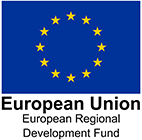Design codes are not a new invention, they have in fact been around for centuries. They have been used in one form or another since the Renaissance, and possibly earlier. Some of our most cherished developments, from the Georgian period through to the Garden Villages and New Towns, were based on adopted codes. Good examples can be seen in Edinburgh New Town and the Royal Crescent in Bath.
Problems of monotonous and standardised suburban housing design dominated by standards imposed by highway engineers in the 1960s and 1970s created a renewed interest in development and design codes. It was inspired by the work of Gordon Cullen and the Townscape Movement, and the “Outrage” campaign in the Architectural Review Journal led by Ian Nairn. The Essex Design Guide published in 1973 was the result of a continuing line of attempts to counter these problems through detailed residential design guides. It advocated a careful respect for local design traditions but did little to take into account development viability.
In more recent times the New Urbanism movement that began in America in the 1980s has adopted and extolled the virtues of design codes. Andrés Duany and Elizabeth Plater-Zyberk worked on the design code for a new town called Seaside in Florida in the 1990s that renewed interest in design codes in the UK.
Well known UK examples include the re-development of Hulme in Manchester in the early 1990s, which followed guidelines that were close to a code. The Prince of Wales’ development at Poundbury laid down a prescriptive code based on the principles of traditional urbanism.
English Partnerships also worked with the Prince’s Foundation to apply codes to new schemes on ex-new town land such as Upton on the edge of Northampton (further information available at our sister website creatingasenseofplace.com).
The concept of development codes starts from the proposition that the design of a new development can be planned and regulated to achieve a higher quality outcome. It introduces an increased level of design control in an attempt to exert greater assurance over the quality of the product.
Development codes are a form of design guidance that prescribes the three dimensional components of a development and how they relate to one another. The development code can define both fixed and flexible elements. They should have flexibility but the ability to deliver:
- Consistent quality across the development
- Provide key points of reference for architects and developers
- Give certainty to landowners, the council, developers and architects regarding the requirements of delivering the approved masterplan
- Commercial deliverability
Design codes are most valuable for sites that possess one or more of the following characteristics:
- Larger sites where development is likely to be phased
- Sites in multiple ownership
- Sites to be developed by several different developers and design teams and where development is to be phased.
In 2006, CABE produced a practice manual for producing design codes. Key factors identified for the successful preparation of a design code included:
- Should be based on sound urban design principles rather than architectural aesthetics
- The need to set clear quality thresholds in defining place
- Investing time and effort upfront pays off with enhanced sales and land values
- They should be a delivery mechanism for a clear defined vision
- Require a collaborative environment between landowner/ developers, the design team and planning and high authorities
- The need for clear and effective leadership and political support
- A multi disciplinary approach
At Node we believe that development and design codes can add value in the right circumstances. Our starting point is to understand the overall vision and context within which the design code is to be delivered. A parameter plan or measurable masterplan provides the overall framework for the code but consideration of character areas, the block, the street and individual building are all critical in achieving quality.
The code must be clear and precise regarding what it is trying to achieve. It needs to place great emphasis on the interface of buildings and the public realm. It needs to develop on the basis of stakeholder engagement and have political, economic and social support.
The code needs to communicate its aspiration through a clear hierarchy of design principles. It is important they have a clear visual language of plans, cross sections, axonometric drawings and sketches supported by detailed requirements in the form of tables and matrices.
Node has produced development and design codes for sustainable urban extensions and on more complex urban sites. As part of our continuing professional development, the Node team also recently visited the BO 01 western harbour development in Malmo where the design was based on a development code to establish a BREEAM Community certification based on sustainability principles. The outcome of which has been the creation of an excited mixed-use development that has not stifled creativity but instead, added to it.
We would strongly recommend a visit. See further information at our sister website http://www.creatingasenseofplace.com/place/84/bo01
Also further information on Upton and Poundbury can be found in the links below
http://www.creatingasenseofplace.com/place/112/upton
http://www.creatingasenseofplace.com/place/88/poundbury














